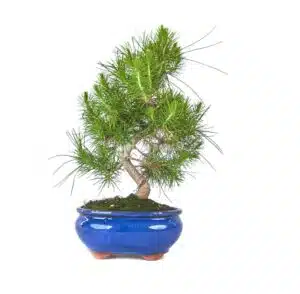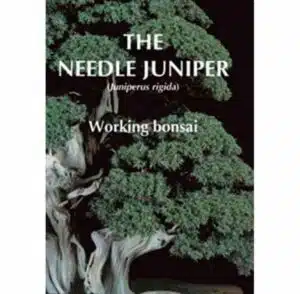The 8 most heat-resistant bonsai species

In a world where heat waves are becoming more and more frequent, it is essential to find bonsai species that can resist high temperatures and, at the same time, cope with water shortages. In this post, we will explore the 8 most heat-resistant bonsai species, especially selected for their capacity to prosper in warm climates and maintain their beauty despite adverse conditions. These species are especially relevant to bonsai enthusiasts in Europe, where heatwaves are on the rise. Discover these fascinating heat-resistant species that offer an ideal solution for changing and demanding climates.
1- Olea europaea (Olive tree)
The Olea bonsai, or olive tree, is prized for its beautiful silvery bark and small green leaves. Often found in the landscapes of southern Spain, this species is not only resistant to heat, but can also survive long periods of drought. Its capacity to adapt to water shortages makes it an ideal choice for those in search of a bonsai tree that can endure the most extreme climatic conditions.

Bonsai olive trees need direct sun exposure, and moderate watering, allowing the soil to dry out between waterings, to grow healthily. In addition, they require regular pruning to maintain their shape and stimulate the growth of fine branches.
2- Ficus retusa
The Ficus retusa is a versatile and adaptable species that is among the most popular bonsai species. Their glossy leaves, aerial roots and twisted trunk give them a unique appearance. Ficus can bear high temperatures and adapt well to warm climates. They require partial sun exposure and regular watering, avoiding both overwatering and dehydration. They will also benefit from regular pruning and pinching to preserve their shape and promote the growth of strong roots and branches.
3- Pinus halepensis (Aleppo pine)
The Aleppo pine is a sturdy, low-maintenance bonsai that can endure extreme conditions of heat and dryness. Their green needles and rough bark give them a robust and attractive appearance. The Aleppo pines require direct sun exposure to grow properly. As for watering, it is important to avoid flooding. Additionally, they need regular pruning to maintain their shape and density.
4- Pistacia lentiscus (Mastic tree or Lentisc)
The Mastic bonsai is known for its ability to resist heat and dryness. This species has small, glossy leaves, and its bark can take on attractive shades as it ages. Mastic trees thrive in a sunny or partially shaded exposure. Regarding watering, it is important to allow the soil to dry out slightly between waterings to avoid excess moisture. It is also important to prune them to keep a compact and balanced appearance.
5- Podocarpus
The Podocarpus bonsai is a perennial species noted for its capacity to adapt to different climatic conditions, including warm climates and periods of drought. Its leaves are long and dark green, creating an elegant and sophisticated look. The Podocarpus is valued for its heat tolerance and their ability to survive with less water.
6- Durantha repens (Duranta)
The Duranta bonsai is a popular option for those who wish for a splash of colour in their collection. This species is prized for its vibrant purple flowers and bright green leaves. The Duranta thrives in a sunny, warm exposure. As for watering, they need a slightly moist, but not saturated substrate. In addition, regular pruning is important to maintain its compact shape and stimulate flowering.
7- Zelkova parvifolia, an elm bonsai
The Zelkova parvifolia is highly heat resistant can endure extreme temperatures. Its leaves are a beautiful shade of green and change to warmer shades of yellow and orange in autumn. This species can also survive with less water, making it a smart choice for warm, dry climates.
8- Juniperus chinensis (Chinese Juniper)
The Chinese Juniper bonsai is known for its sturdiness and capacity to thrive in warm climates. Its leaves are small and flaky, and its bark can develop interesting textures over time. The Juniperus chinensis prefers a sunny exposure and requires moderate watering, allowing the soil to dry out slightly between waterings. Regular pruning and pinching is essential to maintain its shape and density, as well as to promote the growth of fine branches.
In a world affected by rising heat waves, it is essential to choose bonsai species that can withstand high temperatures and cope with water scarcity. The 8 species mentioned above –Olea, Ficus, Pinus halapensis, Pistacia lentiscus, Podocarpus, Durantha repens, Zelkova parvifolia and Jupinerus chinensis– are not only heat-resistant, but some of them can also adapt to a lack of water.
These are the 8 most heat-resistant bonsai species, which offer an ideal solution for bonsai enthusiasts who wish to grow these beautiful creations in warm and changeable climates, like those increasingly found in Europe.
Make sure to provide proper care for these species, including watering and protection from overexposure to the sun, to maintain their long-term health and beauty in challenging conditions. We invite you to watch this video for some basic tips on how to care for your bonsai during summer.
About the Author
Mistral Bonsai
In Mistral Bonsai we are a communication team, technicians and masters committed from the first day to disseminating the wonderful art of bonsai. A world that offers many things to share. We believe that a bonsai is a tree with a soul, unique and unrepeatable. Another of our most essential pillars is, how could it be otherwise, our close commitment to the preservation of the environment and nature.
Categories
Bonsai cultivation and care (59)
Bonsai gift (2)
Bonsai pests and diseases (7)
Bonsai repotting (3)
bonsai substrates (2)
Bonsai summer (1)
bonsai tools (1)
Bonsai work (13)
Ceramic pots (3)
Chinese culture (2)
Chinese culture (1)
Coniferous bonsai (1)
Conifers (1)
Corporative Mistral Bonsai (8)









